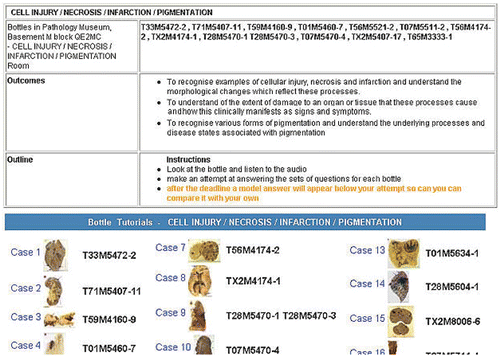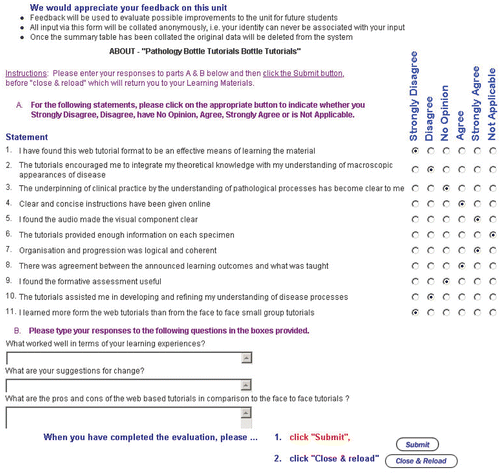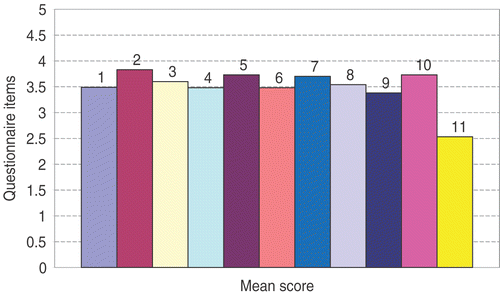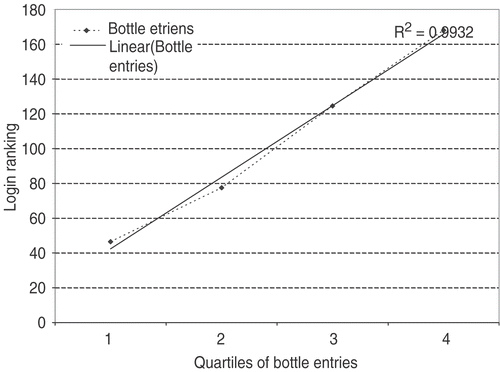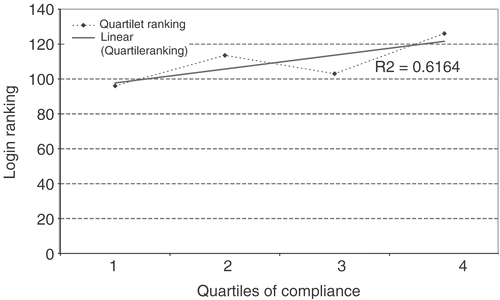Abstract
Background: Forces influencing the remodelling of medical curricula have clouded the visibility of pathology teaching yet its mastery is central to the study of medicine. The shortage in the workforce available for routine clinical diagnosis, research and teaching, and increasing student numbers have driven the development of innovative teaching methods.
Aims: To develop teaching methods which improved student satisfaction and engagement in their learning of pathology, and which also accommodated larger classes.
Methods: An iterative development cycle adopting effective use of the web and sound instructional design pedagogies was followed. Two face-to-face formats, i.e. small group and large group, and a self-directed web-based (online) format were implemented on a cohort of 220 third year medical students. Outcomes were evaluated by analysis of a student preceptions questionnaire and of students’ web footprints in the online resource.
Results: Themes relating to teaching techniques, learning preferences and accessibility issues emerged as significant in the students’ perceptions. Measures of user “online avidity”, “case breadth compliance” and “formative assessment compliance/diligence” were determined by comparing historical behaviour in the web resource with patterns of use within these modules. Students who were proven avid online users entered the resource more frequently than less avid users. However less avid online users did not necessarily access a narrower breadth of cases than avid online users. Students who made maximal use of the web formative assessments tended to have better summative outcomes.
Conclusions: The students adopted the online resource as a learning tool. The optimal combination of small group face-to-face tutorials and the self-directed web-based (online) format improved pathology teaching, partly because it satisfied a broader range of learning styles in students. The cycle used of develop, implement, evaluate was successful as it engaged the students, was evidence based and driven by discipline experts who were commited teachers.
Introduction
Medical education in Australia and throughout the world has undergone radical change in recent years. Expansion of medical knowledge, increased student numbers, a decline in funding for teaching, have coincided with a desire to introduce new and more effective teaching methods and better integration. This has increased the demands on the time of medical teachers.
Pathology, worldwide, is now severely constrained by a shortage in the workforce available to perform routine clinical diagnosis, research and teaching. Several articles (Finucane et al. Citation1998; Healthcare Management Advisors Citation2001; Weedon Citation2003) have highlighted the invisibility of pathology teaching in modern medical curricula, yet few would disagree that Pathology is central to the study of medicine.
Such constraints have rejuvenated interest in the effectiveness of medical teaching, focusing attention on standards and quality improvement. Indeed, change, innovation, and the academic autonomy required to improve the student's learning experience are promoted in the global standards of the World Federation for Medical Education (WFME) (WFME Citation1998; Karle Citation2003).
Following a curriculum review for the re-accreditation of the Faculty of Medicine and Dentistry at The University of Western Australia in the year 2000, significant changes were proposed and implemented throughout the six year, undergraduate Bachelor of Medicine, Bachelor of Surgery (MBBS) course. The revised curriculum model, which was a hybrid of problem-based and traditional didactic delivery, introduced additional challenges for the teaching of Pathology.
Recent reports (Cook et al. Citation2005, Citation2006; Grunwald & Corsbie-Massay Citation2006; Kerfoot et al. Citation2006) have given a fresh infusion of educational credibility to the adjuvant use of web tutorials in medical teaching. We undertook to address some of the problems facing pathology teachers by blending focused web-based tutorials with resource intensive, small group, face to face teaching sessions centred on “bottle” specimens from our Pathology museum. For each of these methods of teaching, the emphasis was placed on correlation of morphology and clinical aspects of the condition.
This paper describes the iterative sequence of development that was followed, reflects on the underlying teaching and learning rationale and declares the “win/win” outcome achieved by students and staff. The teaching methods described are of relevance to medical educators in many disciplines and provides evidence of effective and enjoyable learning experiences for students in the face of declining resources.
Methods
Educational process
Pedagogy for the effective use of the web to support teaching and learning in pathology
Pathology, as a discipline, is characterised by its image rich cognitive context and is an ideal subject to harness the qualities of the web as a medium, utilising colour, dynamic representations and interactivity. The benefits to teachers of investing time to work up quality web-based formative support material are: its re-usability from year to year, the access to tracking of student progress enabling formative intervention and the ability to request and harvest evaluation data with high student compliance. The disadvantage to teachers is the initial investment of time amongst their other teaching and service commitments. If an educationally rich web resource is established, the benefits to students are that: they can access expert feedback on demand, have a wider variety of visual/audio/text formats thus satisfying a range of learning styles, and have continued access to the focused expert-driven self assessments of high formative benefit.
The curriculum design framework was to build a set of formative self assessments to support lecture clusters. Students would work through these and teachers could track how the students were performing and/or how suitable the assessments were. Most assessments were custom built de novo using an award winning, in-house tutorial environment (FlyingFish) (Scott & Stone Citation1998, Citation1999). This software had been adopted to host the entire MBBS course under a single umbrella. Where there was a special skill set to be mastered and where this process could be accelerated with practice online, a matching web module was constructed. Such was the case for the study of macroscopic specimens and the extrapolation of the observations to microscopic and clinical characteristics.
Web development cycle–design, implement, evaluate
The discipline experts drove the ongoing cycle of web development, facilitated by a fellow academic (MALM) with education and web expertise. The process was as follows:
Initially: A formative “web OSCE” module was implemented online which mimicked an “OSCE” style summative assessment format where students completed a sequence of timed stations answering questions written on a card in front of macroscopic specimens. This tested disease recognition. The “web OSCE” presented students with high quality images of specimens and required them to enter the organ and diagnosis within one minute. On completion students would print a page showing their answers for the set and, after a deadline, the real specimens with their case histories were left out on display in a special area of the museum. The students would then visit the museum and compare their printout with the physical specimens and case histories.
Subsequently, the imbalance of student numbers and physical resources caused the cessation of the OSCE mode exam. The matching formative “web OSCE” module continued to be used by students.
Next: The teachers were concerned that students were not benefiting sufficiently from a rich departmental learning resource, the Pathology museum where preserved specimens with their clinical histories are available for student perusal. As assessment drives learning, one approach to this was to create a museum logbook into which students would indicate which museum specimens they had viewed and answer a set of short answer questions in the logbook. To match this, a web resource was constructed which specified sets of bottles to be worked through by students in a set weekly pattern; no images were offered as the students were required to attend the museum. At the end of the week, the answers to the short answer questions would appear on the website and students would compare their books with the web answers.
Then: A further cycle of teacher driven development ensued. The framework of the web resource supporting the logbook was used as a basis for storing multiple images of the macroscopic specimens as well as audio snippets, which had been dictated by a teaching clinical pathologist who had been tasked to review the teaching sets. Care was taken in the choice, aspect and quality of the specimen images used and arrow overlays were added and mentioned in the audio. Students rated this very highly (see Evaluation below) and the positive user response inspired the experts to apply the template more broadly, introducing it into fourth year teaching and expanding its use to support the teaching of systems-based as well as general pathology in third year.
Reduced resources forced the teachers to review the long-standing teaching practice of face-to-face small group tutorials centred on macroscopic bottle specimens. The teaching academics decided to pilot three tutorial formats, i.e. small group, large group and self-directed web-based (online), on a rotational basis throughout the semester so that all students had equivalent experience of each.
Instructional design of pathology case tutorials
Small group (face to face) format: Eight groups of up to fifteen students met around a large table to discuss approximately ten macroscopic bottle specimens. These sessions ran concurrently in multiple venues in the Pathology department. A clinical tutor attended each group facilitating the discussion of each specimen by students, who could take written notes during the session. They were encouraged to participate and were prompted with leading questions related to the learning issues. An attendance roll was kept but their performance/attendance had no summative impact on final assessment.
Large group (face to face) format: Up to twenty-four students met in a faculty computer laboratory, logged in and went to the nominated online tutorial page for that topic and clicked on the first bottle, such that a full screen image of the specimen was in focus on their screen. The clinical pathologist tutor explained the features of note, and asked and answered questions of students. To accommodate all students each session was repeated five times. Attendance rolls were kept but student performance was not assessed.
Self-directed, web-based (online) tutorial format: This was progressively implemented in support of both general and systems-based pathology teaching. The introduction to a set of modules is shown in .
shows the opening presentation of a module to students. Each case displayed the text of a short history, an array of clickable thumbnails of macroscopic and microscopic images and a link to the audio. Beneath was a list of six questions each with a text box into which the students entered their answers; they could revise these until the deadline usually one week later.
All students were expected to look at the full-sized images of each case while listening to the audio, and to submit answers to the set of questions for each bottle before the deadline, after which the model answer would appear below the student's attempt. Students would receive formative benefit by comparing their answers with the model answer. Teachers could query the FlyingFish for a report of students’ attempts at the questions.
Measurement of outcomes
Collection from student evaluation data
Evaluation data were collected from both students and staff. Students completed an online questionnaire with 15 Likert questions and three open-ended questions:
What worked well in terms of your learning experiences?
What are your suggestions for change?
What are the pros and cons of the web based tutorials in comparison to the face-to-face tutorials?
Of 220 students enrolled 200 students completed the Likert questionnaire (90% response) and 110 gave a total of 314 open-ended comments (55% response). The survey tool is shown in .
Staff involved in the teaching (3) were interviewed (non-structured) separately and questions, similar to those of the student questionnaire were asked. The interviews were transcribed.
Analysis of student evaluation data
Means were calculated for each of the Likert questionnaire items.
Content analysis, a research technique used for objective, systematic and quantitative analysis of communication (Kassarjian Citation1977), was used to examine the qualitative data from the student questionnaires. Comments that included more than one statement were split into separate comments. Samples of student open-ended responses and staff statements are included in and discussed below.
Table 1. Themes emerging from students’ perceptions of their learning experiences; quotations from students are shown where appropriate
Collection of web evidence data
Reports (de-identified) were requested in the FlyingFish of individual student and whole class footprints (page hits) throughout the site, including student interactions with the formative assessments.
Data from two student cohorts of third year medical students were collected; 157 students from 2nd semester in 2005 studying systems-based pathology, and 221 students from 1st semester 2006 studying general pathology.
The footprint analyses of each of the 2005 and 2006 student cohorts showed similar trends. The larger 2006 cohort is the data source for the detailed analysis reported below.
Analysis of web evidence data
Case Compliance: As there was a total of 73 cases in the pathology foundations resource, this represented a maximum breadth of 73 opportunities for study. A “case compliance index” was constructed such that if students’ footprints showed that they had engaged with all 73 cases, this was 100% breadth compliance. A cumulative frequency plot of the compliances estimated for each of the 220 students in the 2006 cohort showed a normal distribution with a median of 45% and a mode of 51% for the population.
User Online Avidity: As there was a single teaching web resource for students from the first year of their six year course, their cumulative site footprint from years one to three was used as a record of their avidity in using online delivery in their learning.
The relationship of the case compliance estimation with total system logins and with hits to the entry page for the bottles resource was examined. Students were ranked from 1 to 220 in their standing for each variable, i.e. total logins, hits to the bottles entry page and the case compliance.
The student with the greatest number of total logins was ranked one for “online avidity”; the student who had hit the bottles entry page most was ranked one for entering the resource; students who had visited every case, i.e. 100% compliance, were ranked from one in ascending order.
Formative Assessment Compliance/Diligence: A report was requested for each module to show whether students had completed the short answer question sets by their deadlines and to list their actual submissions. A student measure named “web formative diligence” was devised. Students who had attempted every formative assessment question in one or two of the modules were flagged as being “moderately diligent” and those who had done so in three or more modules as “maximally diligent”. To identify any relationship between students’ summative outcomes and their use of the web for formative assessment, the frequency of the diligence parameters were estimated for students who scored distinctions (70–80%), high distinctions (>80%), or failures (<50%) in both the final multiple choice and written exams.
Use as Learning tool: A question that remained for the authors was; Did students who were already avid online users make the most use of the web tutorials or did the web tutorials engage students who were less avid online users? To dissect this out, the students’ footprints were further analysed subtracting out the proportion of hits attributable to short answer submission per case.
The ranked population for each variable was then divided into quartiles and the slope of the median values per quartile compared ( and ).
Results
Student perceptions (evaluation data)
The means for all 11 questions congregated around 3.5. The highest mean (3.83) was for question 2 (“The tutorials encourage me to integrate my theoretical knowledge with my understanding of macroscopic appearances of diseases”).
The lowest mean (2.53) was for question 11 (“I learned more from the web tutorials than from the face to face small group tutorials”).
lists the themes that emerged from the student open-ended responses reflecting their learning experiences. A number of themes emerged including those related to teaching techniques, such as online learning methods and face-to-face tutorials, and specific aspects related to the learning (e.g., assisted formative learning and audio). The themes relating to change included comments that supported students’ different learning preferences, such as more face-to-face tutorials and also increasing online tutorials. As well, there were a number of themes, including comments relating to the audio and accessibility, which provide suggestions for change to the features of the programme.
Student use (web data)
Accessing the cases
As would be expected there was a direct relationship between the total system logins and hits to the bottles entry page (–correlation coefficient = 0.9932). Students who were avid online users also entered the bottles resource more.
In contrast, the correlation between online user avidity and breadth of cases accessed (case compliance) was not significant ( –correlation coefficient = 0.6164). The students who accessed a greater proportion of each case set did not necessarily have a track record as an avid online user.
Student completion of short answer formative assessments
While 52% of students completed the short answer questions online by the deadline for the first and largest study module, and 20% of students completed the second module in time, only 10% of the cohort completed the question sets for each of the four subsequent modules by their deadlines. The answers submitted by students were always genuine attempts, i.e. there were no “nonsense” responses.
Web formative assessment and summative outcomes
shows the proportion of students who were moderately diligent and maximally diligent in sub groupings based on final summative exam results in each of the final written and multiple choice exams. The small population sizes preclude statistical comparison but it is clear that students who made maximal use the web formative assessments (regardless of their group allocation for formal instruction), tended to have better summative outcomes.
Table 2. Relative web formative diligence and summative outcome
Discussion
This study is presented from the perspective of a discipline requiring mastery of special skills which in turn, form a baseline for further clinical learning. It is likely that multiple non-discipline related factors have rendered our historically adequate, discipline specific teaching practices as unsustainable or insufficient for the achievement of mastery. Such factors include changes in: student selection methods, student numbers, financial resources and availability of discipline expertise. This phenomenon likely applies broadly in medical education.
Our broad brush, bottom up approach to meeting students’ learning needs contrasts with other published works (Askell-Williams & Lawson Citation2006; Chapman & Calhoun Citation2006) which aimed to pin point learner attributes and then target them. We faced an immediate problem and developed teacher-driven solutions in response.
Student responses in the qualitative evaluation showed that they perceived that their learning was aided by the varied modes of delivery. Although the open ended questions did not aim to identify learning styles in the responders, the range of equal and opposite student responses clearly showed heterogeneity in preferred learning modes/approaches/styles.Footnote1
Furthermore the evaluation process itself engaged the students in the development. While this is not unique, the overall positivity of responses indicates that students had a degree of ownership of the learning tool and that its implementation had been responsive to learner needs.
Student interaction with the web resource
The web resource was well attended and used for both learning and formative assessment. Its availability for learning and reflection (i.e. viewing images, listening to audio) had no time limits or deadlines imposed on it. In contrast, the formative assessments for each module were timed such that the opportunity to submit an answer opened and closed as the learning was “scheduled” throughout the semester. This was intended to help students pace themselves and avoid last minute pre-exam cramming.
However, the students’ adherence to the deadlines for the short answer questions declined markedly as the semester progressed. In fact, the “hard core” ten percent group who persisted till the end of the semester comprised almost all of the same students. The only benefit to students for submitting answers before the deadline was to be able to compare their own attempt with a model answer. In educational terms, learners with such a preference would be “meaning” or “achieving” orientated, and this has been reported as a minority type for medical students (Chessel Citation1986). As the model answer appeared for all students after the deadline whether or not an answer had been submitted, students could still use the question sets for revision after the deadline.Footnote2 The strategic learners in our cohort (Entwistle & Ramsden Citation1983) would recognise this. One interpretation of the apparent decline (as measured by answer submission) in formative assessment use is that the students were strategically using it for their own purposes, rather than for the one that we, as teachers, intended.
Instructional design
The modules used a consistent structural template which was simple, uncrowded and required students to make active choices throughout; each one included a self assessment. The clinical context was self evident and the mixture of media formats (audio, image, text) provided material for both visual and auditory cognitive processing; these are all criteria for a successful learning tool (Grunwald & Corsbie-Massay Citation2006).
If one considers our entire schema in the context of Groat & Musson's (Citation1996) matrix where two bipolar constructs of thinking (concrete vs abstract, and safety vs challenge) are used as a framework to partition four student learning styles (pragmatist, activist, reflector, theorist) (Honey & Mumford Citation1992), our instructional design is a perfect match in its teaching strategies. In other words, the annotated images, methodical audio descriptions, clearly structured open ended questions with model answers, the face to face interaction with a tutor and physical specimens, and the didactic whole cohort lectures, together comprise a set of teaching strategies that satisfy a wide spectrum of learners.
Prior to this implementation, if there had been a major mismatch of learning style with the teaching delivered in a small group tutorial, the unresolved issues could have remained unresolved for the learners. Now, such dissonances can be balanced off by the learners engaging with some instructional aspect(s) of the web resource which resonate for them.Footnote3
It was noted anecdotally, that overall student evaluation of pathology teaching subsequent to the introduction of this web resource improved; i.e. in prior years, much dissatisfaction and student unrest had been expressed by student representatives relating to the teaching style and learning experience in pathology; this was now not evident and indeed the feedback from individual students through the evaluations was positive.
The web resource as a learning tool
As would be expected students who already had a proven record as avid online users entered the bottles resource more (). However, a less avid online user did not necessarily access a narrower breadth of cases than an avid online user (). The authors interpret this as further evidence that the pathology web resource was satisfying broader learning needs than those addressed by online material elsewhere in the FlyingFish, i.e. it was adopted as a significant learning tool.Footnote4 The persistent use of the formative assessments as primary learning material rather than as paced self-assessments, their designed role, reinforces this perspective.
The successful formula
The small group face-to-face format is labour intensive particularly in view of increasing student numbers. This is exacerbated by decreasing availability of adequately trained tutors and problems sourcing adequate numbers of suitable “bottles”. Continued use of this format is uncertain despite its high regard as a teaching tool.
The large group face-to-face format partially alleviates some of these pressures by accommodating more students and utilizing web images. The potential disadvantages include less interaction between tutors and students, the loss of the experience of physically handling the “bottles” and need to provide a functioning multi-terminal computer facility.
The self-directed web-based (online) tutorial format has the advantage of requiring little tutor input once it has been established, although review for modification and/or updating is desirable. Students get equal access to the same information making it available for summative assessment (if resources are available). The requirement for “bottles” is eliminated; it is available to the student at any time; and requires minimal maintenance of the resource.
Our experience suggests that a combination of small group face-to-face tutorials (if they are sustainable) and the self-directed web-based (online) tutorial format is desirable to improve teaching of pathology.
Conclusions
The innovations described represent a significant, expert-driven pedagogical change that was implemented to survive major challenges that are common to many medical schools worldwide. The response here by the experts stands out, in so far as their solution was drawn from within by successfully applying simple technology and local expertise to serve their immediate need.Footnote5 The repeating cycle of develop, implement, evaluate was effective as it engaged the students and was evidence based. It perhaps embodies a safe approach to “life long teaching”.
Academic autonomy is a fundamental attribute underpinning ongoing quality improvement in medical education (Karle Citation2003). Students clearly still value personal contact. Opportunities for role modeling are important aspects of the experiences we offer. In accord with recent editorial comment (Norman Citation2006), a key factor was that the design was determined and controlled by discipline experts who were teachers committed to graduating safe practitioners, as well as future specialists. Thus, where the use of technology is appropriately facilitated, it can be blended as an essential partner, enabling institutions to cope with increasing student numbers, and students to balance their own learning.
Acknowledgements
The contribution of Professor John Rippey and Mr Darren Starmer in drafting the first version of a logbook and supporting text-based web content for the Pathology museum is acknowledged.
Dr Lawrence Yu's professional contribution as an academic teacher and clinical pathologist is acknowledged.
MALM is supported by funding from the Commonwealth of Australia, Department of Health and Ageing.
Notes
Additional information
Notes on contributors
Moira A. L. Maley
MOIRA A. L. MALEY, BSc, MSc, PhD, Assoc Dip App Sci (Naut), PG CertMedEd is a Teaching/Research Fellow (Medical Education) implementing the effective, innovative and educationally sound use of the web/technology for teaching and learning in the Rural Clinical School. Her background as a medical research scientist and keen ongoing interest in experiential learning (sail training) broadens her contribution.
Jennet R. Harvey
JENNET R. HARVEY, MBBS, FRCPA is an Associate Professor of Pathology, and Consultant Pathologist, Division of Tissue Pathology, PathWest
W. Bastiaan de Boer
W. BASTIAAN DE BOER, MBBS, FRCPA is a Senior Lecturer in Pathology, and Consultant, Division of Tissue Pathology, PathWest.
Nathan W. Scott
NATHAN W. SCOTT, PhD is a Lecturer in Mechanical Engineering. His PhD subject was the educational outcomes of a computer-based tutorial system he set up in 1995, with Prof. Brian Stone, to teach engineering dynamics. Since then he has been teaching mechanical engineering, particularly design and manufacturing, at The University of Western Australia. He has also worked as an engineer in Japan designing equipment to measure human motion, and as an engineer in Australia for GENG.
Gina E. Arena
GINA E. ARENA, MA, PhD was a Lecturer in Medical Education research in the Education Centre, Faculty of Medicine, Dentistry & Health Sciences, The University of Western Australia at the time of acceptance for publication.
Notes
1. –note 1.
2. –note 2.
3. [Student: “Able to go through at your own pace and repeat questions if necessary.”]
4. –note 4.
5. [Staff comment: “We have to evolve, there is no choice given the increase in student numbers and resource issues”.]
References
- Askell-Williams H, Lawson M. Multi-dimensional profiling of medical students' cognitive models about learning. Med Educ 2006; 40: 138–145
- Chapman D, Calhoun J. Validation of learning style measures: implication for medical practice. Med Educ 2006; 40: 576
- Chessel G. Learning styles in first year medical students. Med Teach 1986; 8: 125–135
- Cook DA, Dupras DM, Thompson WG, Pankratz VS. Web-based learning in residents' continuity clinics: a randomized, controlled trial. Acad Med 2005; 80: 90–97
- Cook DA, Thompson WG, Thomas KG, Thomas MR, Pankratz VS. Impact of self-assessment questions and learning styles in web-based learning: A randomized, controlled, crossover trial. Acad Med 2006; 81: 231–238
- Entwistle N, Ramsden P. Understanding Student Learning. Croom Helm, London 1983
- Finucane PM, Johnson SM, Prideaux DJ. Problem Based Learning: its rationale and efficacy. Med J Aust 1998; 168: 445–448
- Groat A, Musson T. Learning Styles: Individualising computer based learning environments. Assoc Learning Technol 1996; 3: 53–62
- Grunwald T, Corsbie-Massay C. Guidelines for cognitively efficient multimedia learning tools: Educational strategies, cognitive load, and interface design. Acad Med 2006; 81: 213–223
- Healthcare Management Advisors PL. Analysis of current practices in relation to the teaching of pathology (laboratory medicine). Australian Government, Department of Health & Ageing, Adelaide, Adelaide 2001, Final Report.
- Honey P, Mumford A. The Manual of Learning Styles. Maidenhead. 1992
- Karle H. Basic medical Education WFME. Global Standards for Quality Improvement. WFME Office: University of Copenhagen. 2003
- Kassarjian HH. Content Analysis in Consumer Research. J Consumer Res 1977; 4: 8–18
- Kerfoot BP, Baker H, Jackson TL, Hulbert WC, Federman DD, Oates RD, DeWolf WC. A multi-institutional randomized controlled trial of adjuvant web-based teaching to medical students. Acad Med 2006; 81: 224–230
- Norman G. Less is More. Adv Health Sci Educ 2006; 11: 111–114
- Scott N, Stone B. A flexible Web-based tutorial system for engineering, maths and science subjects. Global J Eng Educ 1998; 2: 7–16
- Scott N, Stone B. We did it our way (and you must do it yours). Australas J Eng Educ 1999; 8: 99–123
- Weedon D. Whither Pathology in medical Education? (editorial). Med J Aust 2003; 178: 200–202
- WFME TEC. International standards in medical education: assessment and accreditation of medical schools educational programmes. Med Educ 1998; 32: 549–558

